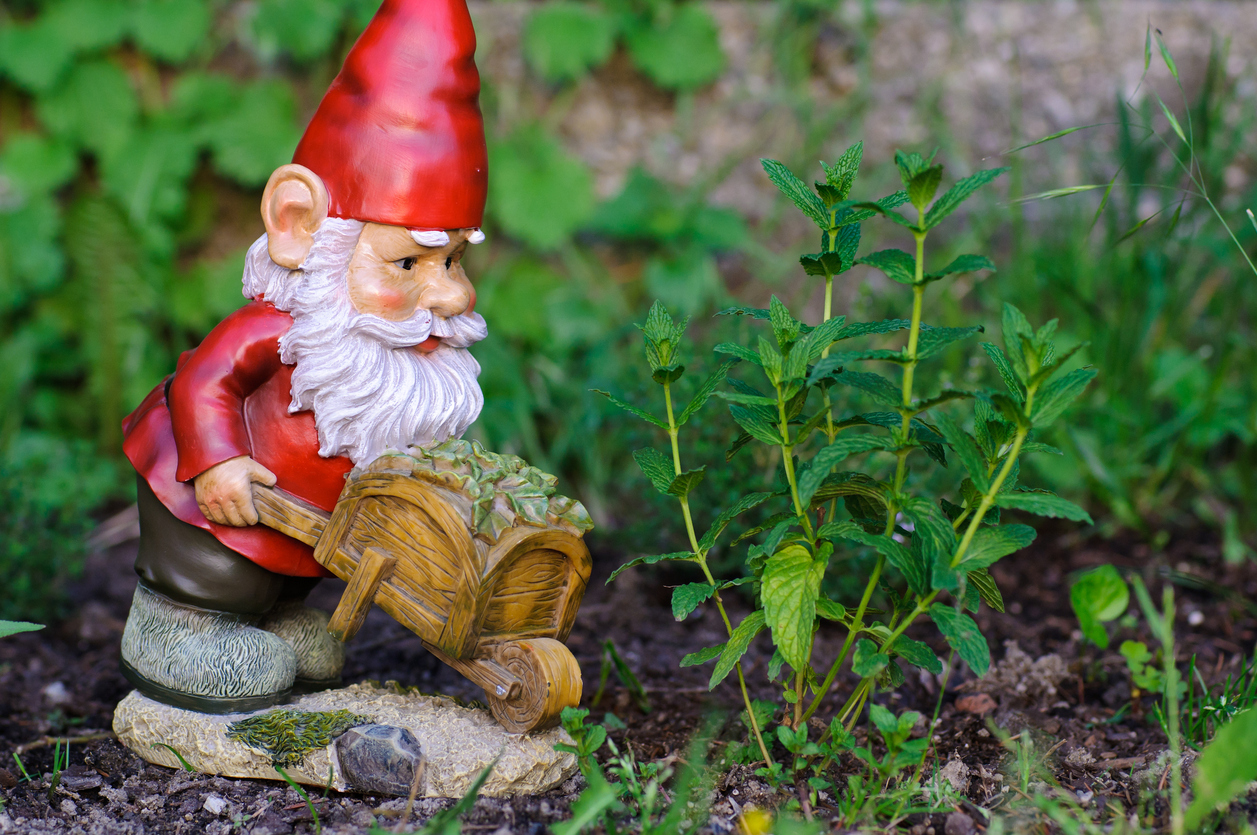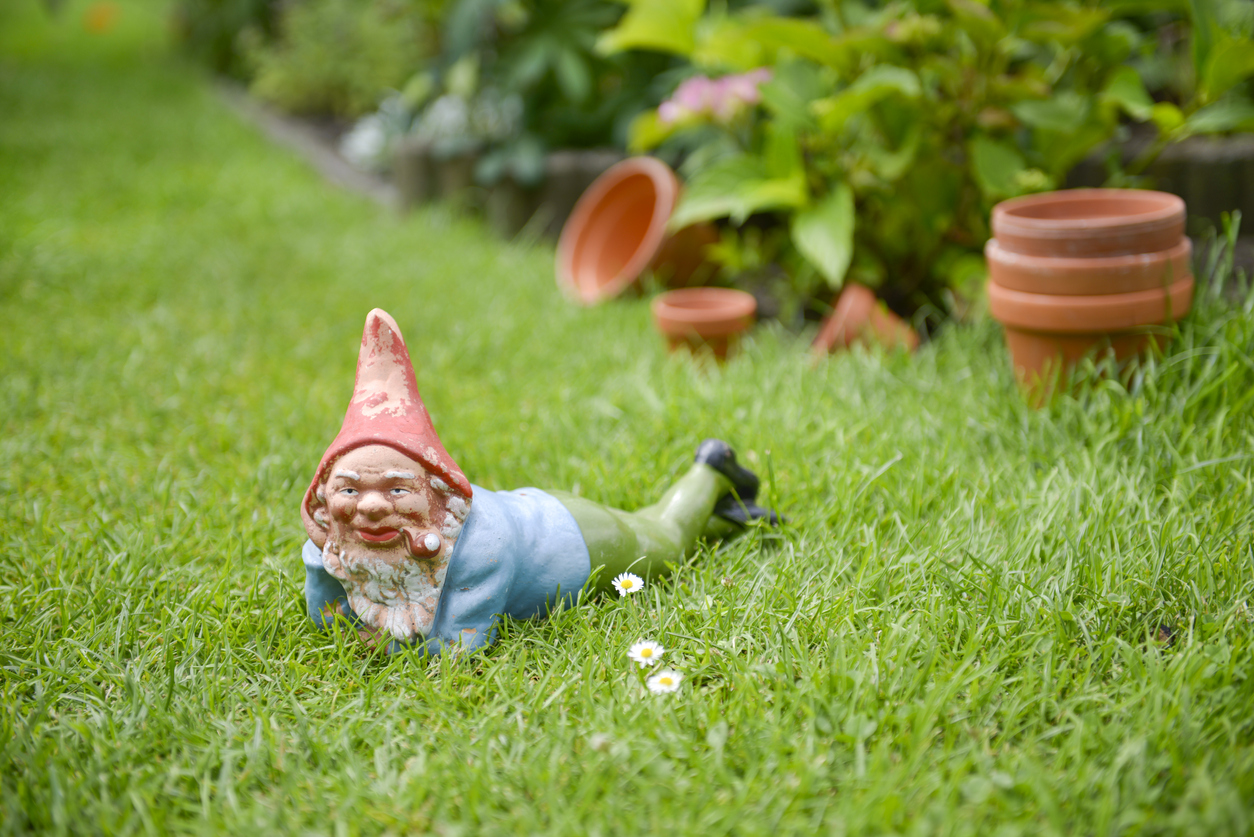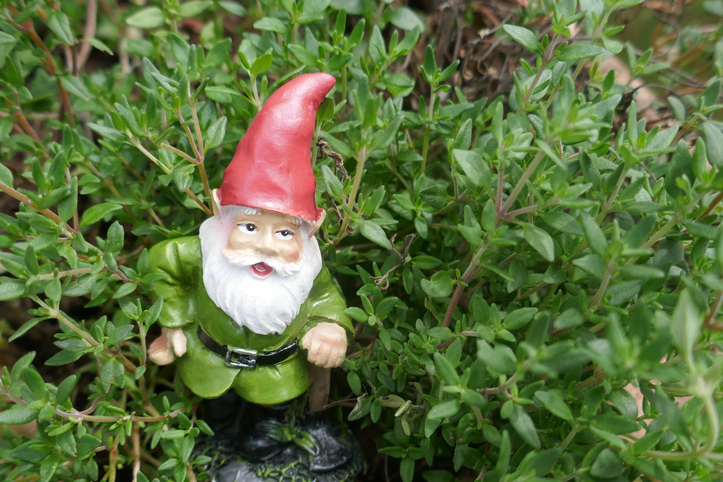We may earn revenue from the products available on this page and participate in affiliate programs. Learn More ›
Garden gnomes not only make a wonderful, whimsical addition to any property, but they also happen to play a significant—and sometimes delightfully bonkers—role in folklore, myth, history, and pop culture. Once available only to wealthy homeowners, the tiny ornamental characters now populate the aisles of garden departments and gift shops around the globe—not to mention the silver screen and its streaming counterparts.
Like a Lilliputian Kevin Bacon, gnomes are surprisingly well connected, with ties to a Roman god of animal fertility, a former Beatle, the 2024 Olympic Games, the father of toxicology, and reality-show host Phil Keoghan. They are popular with gardeners who either build gnome homes or subtly stand them in the garden. When and where did garden gnomes originate, what do they symbolize, and why should you welcome them into your garden or yard? It’s time to dig deep and explore some gnome lore.
RELATED: The Best Lawn Ornaments
Notable Names in Garden Gnome History

Although gnomes’ history dates all the way back to the Roman Empire and marked several notable milestones in the 17th and 19th centuries, today many of us are familiar with gnomes thanks to the 2001 film “Amélie,” the animated kid flick “Gnomeo & Juliet,” released a decade later, or Travelocity’s popular ad campaign featuring the Roaming Gnome, who debuted in 2004 (and who is still active on Instagram).
Prominent names in gnome history include:
- Sir Charles Isham: He is credited with bringing terra-cotta gnomes home from Germany in 1847, thereby introducing them in the United Kingdom.
- Philip Griebel: The German sculptor created the modern-looking version of the gnome in 1880, and his terra-cotta and porcelain gnome factory have now been operated by four generations of gnome-crafters.
- Sir Frank Crisp: This eccentric Englishman’s 62-acre property, Friar Park, boasted an alpine garden and the second-largest collection of garden gnomes in the United Kingdom. From 1910 to 1919, Crisp regularly opened his estate to the public, and in so doing popularized the garden gnome. George Harrison of Beatles fame bought Friar Park in 1970 and penned several songs referencing its former owner, including “Ballad of Sir Frankie Crisp.”
Before all of those gnomophiles, however, there was the elaborately named Philippus Aureolus Theophrastus Bombastus Von Hohenheim. (Good thing he lived in the Renaissance because imagine trying to fit that on a “Hello, my name is” badge.) He was a Swiss physician and alchemist, born in 1493, who went by the name Paracelsus. According to his ontology, gnomes are one of four elemental beings (along with sylphs, nymphs, and salamanders). Not only do gnomes symbolize earth, but they can actually tunnel through soil, not unlike moles—that is, if moles smoked pipes and wore red caps.
Gnomes’ mission in life? To watch over whatever’s growing in the garden, like this gnome holding a bird from Amazon, and protect the property at large (and, in some cases, to travel the world.)
RELATED: 25 Ways to Beautify Your Yard Without Planting a Thing
The Nature and Nomenclature of Gnomes

As with their larger look-alike, the red-cheeked and white-bearded fellow variously known as Santa, St. Nick, Father Christmas, and Kris Kringle, garden gnomes are archetypal figures with innumerable regional and temporal iterations. In Sweden, they’re called “tomte,” Norway knows them as “nisse,” and Dutch gnomes go by “kabouter” (and make wooden shoes).
In almost all cultures, however, gnomes are male, 1 to 2 feet high, and more magnificently bearded than a hipster on the 30th of No-Shave November. They’re usually depicted wearing tall, conical red hats called Phrygian caps. Today’s gnomish garden denizens are often depicted sitting on miniature swings; wielding shovels, watering cans, or other lawn-care accoutrements; pensively smoking their pipes or drinking their morning coffee, like this coffee drinking gnome on Amazon; or even reclined in a “draw me like one of your French girls” position.
Colorful as garden art, gnomes also have a reputation for being magical, mythological, and generally benevolent, like this gnome carrying a glowing solar LED orb on Amazon. Like their Irish cousins, leprechauns, they’re considered good luck. Perhaps because gnomes are so often the subject of pranks and practical jokes, many people think of them as puckish. While some indulge their wanderlust by traveling and sending postcards to their gnome friends back home, and others make TV appearances—Travelocity’s ever-intrepid Roaming Gnome appeared on Season 7 of “The Amazing Race”—most of them are content to stand diminutive guard over our yards and gardens.
Fun Gnome Facts

- Gnomes’ go-to greeting is rubbing noses. They do this upon parting, too.
- With a diet of nuts, mushrooms, berries, potatoes, and beans, gnomes are vegetarians. Their favorite tipple, mead dew, is a concoction of fermented honey, raspberries, and spiced gin.
- A female gnome is known as a gnomess.
- There are several groups known as garden gnome liberation fronts, which either play practical jokes with—or advocate for—the statues.
- Garden gnomes are still hugely popular in Germany, where they number an astonishing 25 million; the nation’s human population is just over 84 million. That works out to approximately 1 gnome per 3.3 Germans.
- The Chelsea Flower Show is famously gnomophobic—with one exception, its centenary celebration in 2013.
- Other Brits love their gnomes, as evidenced by the existence of a Gnome Reserve and Merry Herriers Garden Centre in North Devon.
- A fellow named Lampy, who lives in a Northamptonshire estate, is the world’s oldest garden gnome; as such, he’s insured for 1 million pounds.

